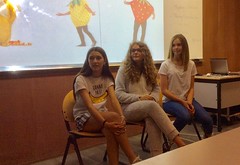
- Get More Information Here:
- Acting Coach
Cele mai noi camere de supraveghere and surveillance
by
andreipitic
he One-Reel Film
As part of its expansion, the Biograph company engaged an actor and playwright called D. W. Griffith to direct its films. Griffith was the first film-maker to appreciate fully and apply the existing techniques of film construction to dramatic storytelling. In particular, he used and invented acting gesture in a powerful way, and he also got more shots into a given length of film than others, both by moving his actors from space to space, and also by developing the technique of cross-cutting between parallel actions into a powerful motor for screen drama. For a couple of years he directed all Biograph films, a total of 30 minutes of finished film per week. Eventually, various of his actors shared some of the directing load, including Mack Sennett, who took over the comedies at Biograph. The other major American film companies followed behind Griffith with respect to the increase in the number of shots in films, but an increase in camera closeness to the actor developed simultaneously in films from Biograph and Vitagraph. The latter company also made a conscious attempt at greater realism in its films, including the acting, and pushed this rather further than Griffith. However, Griffith was the leader in using changes in closeness of the camera to emphasize the drama at appropriate points, and also in employing changes in the speed of cutting within the film for the same purpose.
In 1907 the Selig company of Chicago moved some of its production to California, and it was gradually followed by most of the others, who appreciated the advantages of the new locations and the long hours of bright sunlight there.
It was in Westerns shot in California in 1912 that some of the final major developments in film construction took place. One of these was the use of reverse-angle shots, that is, shots taken in the opposite direction to the preceding shot. Although this sort of shot had appeared before on rare occasions, it was not used as a standard method. Shooting a continuous scene with reverse-angle shots has a number of advantages, including presenting the actor s facial expressions more forcefully, enabling smoother continuity as actors move about the set, and drawing the audience of the film more fully into the action.
Another development allied with this was the use of point-of-view (POV) shots, which meant taking a shot within a scene from the position of one of the actors seen in the preceding (or following) shot. Although point-of-view shots, with a black mask around them simulating the view through an optical instrument or a keyhole, had been used when appropriate since the beginning of the century, the idea of showing what a character in a film sees in an ordinary shot without masking had never been standard practice until this time. POV shots may also be reverse-angle shots, and vice versa, but not necessarily so. A number of little-known film-makers developed these new techniques, but it is certain that D. W. Griffith was not responsible, and in fact he never really used POV shots after they were developed by others. The acting in scenes within D. W. Griffith s films continued to be organized towards the front, following the
camere de supraveghere
.
As American film-makers cut their films up into more and more shots, they had to improve the continuity between these shots. The idea of cutting on action was refined, and the use of reverse-angle shots helped as well. Also, as American films were shot closer and closer to the actors, the acting in them became even more naturalistic and less restrained. The final feature of standard silent cinema was the increasing use of inter-titles, which represented what the actors were saying within the film scene. By 1914 these dialogue titles were being cut into the film at the instant the actors spoke the words, and so the effect was essentially the same as a stage play. Using all these devices, American films brought the audience right up and into the action, and by also leaving out the boring sections with their faster cutting, they proved irresistible to audiences worldwide. By the end of 1914, American films took first place at the box office in Europe, and were taking over from the previously dominant French cinema even in France. The onset of World War I only clinched the inevitable world domination of American DVR .
Film Comedy
The Griffith style of filming was applied to comedy by Mack Sennett, and combined with the French comedy approach to produce something purely American. The comedy effect was intensified by speeding up the action at the climaxes by turning the
camere supraveghere
at a slower rate when the shots were filmed (undercranking). In Europe, the most popular comics had been music-hall clowns such as Boireau (Andr Deed), also known as Cretinetti and Foolshead, but from 1909 comedians who created a developed character in a more naturalistic style had begun to appear, led by Max Linder. Charlie Chaplin followed the approach of Max Linder within a Sennett-type framework.
http://www.videoplus.ro
Article Source:
ArticleRich.com